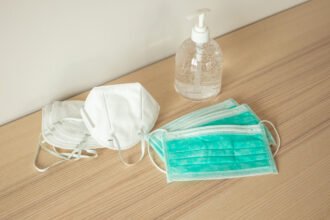Lung cancer causes 160,000 deaths each year. Diagnostic and treatment options have improved greatly in the past decade and continue to advance at a rapid rate. Someone seeking diagnostic assistance or seeking a venue for treatment should find an institution that has the full gamut of staff that has the experience and expertise and which uses the multi-disciplinary approach to care.
Lung cancer causes 160,000 deaths each year. Diagnostic and treatment options have improved greatly in the past decade and continue to advance at a rapid rate. Someone seeking diagnostic assistance or seeking a venue for treatment should find an institution that has the full gamut of staff that has the experience and expertise and which uses the multi-disciplinary approach to care. Meeting with the surgeon, radiation oncologist and medical oncologist together and regularly to receive a single, unified approach is an important and critical element to receiving the best possible outcomes as is working with a palliative care team beginning shortly after diagnosis.
 Most patients are found to have lung cancer only after symptoms such as cough or shortness of breath develop. At this point, the cancer has usually progressed and spread to the regional lymph nodes or to organs outside of the lung. But recently it has been demonstrated that lung cancer can be detected with low dose CT scanning such that over 50% can be found while still stage IA or IB. This greatly improves the opportunity for curative treatment which might be by either surgery or radiation therapy. Further, it has now been amply proven that the addition of combination chemotherapy with a platinum-based compound and another drug given as adjuvant therapy with surgical resection or radiation therapy substantially improves the cure rate. These dame drugs can be used with good effect for those with advanced cancer, leading to lessened symptoms, better quality of life and lengthened survival. And there are now a series of recently introduced drugs that are targeted at the abnormal proteins produced by mutations or rearrangements of the tumor cells’ DNA. These abnormal proteins created by the DNA “driver mutations” can be inhibited leading to marked regression of the tumor until such time as the tumor develops resistance. The question than is who and where should one go to for the best possible care?
Most patients are found to have lung cancer only after symptoms such as cough or shortness of breath develop. At this point, the cancer has usually progressed and spread to the regional lymph nodes or to organs outside of the lung. But recently it has been demonstrated that lung cancer can be detected with low dose CT scanning such that over 50% can be found while still stage IA or IB. This greatly improves the opportunity for curative treatment which might be by either surgery or radiation therapy. Further, it has now been amply proven that the addition of combination chemotherapy with a platinum-based compound and another drug given as adjuvant therapy with surgical resection or radiation therapy substantially improves the cure rate. These dame drugs can be used with good effect for those with advanced cancer, leading to lessened symptoms, better quality of life and lengthened survival. And there are now a series of recently introduced drugs that are targeted at the abnormal proteins produced by mutations or rearrangements of the tumor cells’ DNA. These abnormal proteins created by the DNA “driver mutations” can be inhibited leading to marked regression of the tumor until such time as the tumor develops resistance. The question than is who and where should one go to for the best possible care?
Most patients are not cured at this time although certainly more than previously. For those with advanced disease and who respond to treatment, relapses occur usually within a few months or a year so that only about 50% live more than a year and very few exceed the three year mark. But this is a great improvement over just a few years ago and it is clear that the combination of discovering this cancer earlier and being able to treat it with more effective means is making a substantive difference in not only survival but in quality of life. As a result, these are exciting days for those that treat patients with lung cancer.
The questions for the person who is at risk for lung cancer and wants to consider screening options or for the person who has been found to have lung cancer are the following. Where do I go to get screened? Or, where do I go to obtain the most advanced treatment in a setting that will be as comforting as possible?
The basic answer is to go to an institution that has the staff who are both expert and experienced. The stakes are high; there is little opportunity to reconsider and start again. Let’s consider this in some detail.
Treatment for lung cancer, as with most cancers, is best done in a multimodality or multidisciplinary fashion, i.e. with evaluation by medical oncology, thoracic surgery and radiation oncology at the time of diagnosis. At a minimum, this should be done in a tumor conference. Ideally, patients should be seen in a multidisciplinary clinic by the members of the three disciplines all at one time who then together, in appreciation of the patient’s desires and needs, recommend a joint plan of approach to treatment. This is particularly important for patients with localized or locally advanced NSCLC and those with localized (limited) small cell lung cancer, for which curative therapies are available. But it is relevant for all lung cancer patients as it improves patient and family understanding, prevents misunderstanding, assures that all providers are “on the same page” and that the patient has now met each of the physicians who will be involved in his or her care. Another team member is usually a the nurse practitioner, who will likely be the glue and the connection between the patient and the treatment team over time and who will help the patients “navigate” the medical care delivery system. Further it is always best to have the providers each come to the same clinic location rather than have the patient travel to different doctors’ offices as he or she migrates from treatment with surgery to radiation to drug therapy. This allows the patient the comfort of a familiar location and a well-known and compassionate clinic staff.
Why is this so important? First, it means that the various physicians, each with a different background and perspective, will discuss the various approaches to treatment among themselves and then with the patient. This brings out the best of all parties. But it also means that they come to a unified approach to treatment which can then be presented to the patient. This is much superior to having the patient, over time, visit each of the physicians only to learn that the course of therapy is now to be unilaterally modified. This is very upsetting to the patient and serves to tell the patient that the team is not marching “to the same drummer.” Ideally, the physicians involved will take the time to understand the patient’s and the patient’s family’s needs, concerns and issues. This must be incorporated into the plan of treatment if it is to be met with the patient’s full acceptance and enthusiasm.
This quote from the University of Maryland Greenebaum Cancer Center Thoracic Oncology Program is a good summary of the some of the key elements of multi-disciplinary care. “The team meets twice a week to evaluate patient profiles, review and discuss treatment plans and examine new innovative treatments that could be beneficial to patients. They work together throughout the treatment process to ensure that care is coordinated and duplication of services is eliminated. Patients receive the highly individualized program of care they need while undergoing complex, aggressive therapies.”
Most of the highly experienced, expert institutions also have an active palliative care team. Made up of physicians with expertise in pain management and symptom support, plus nurses, pharmacists, social workers, chaplains and others, this team greatly enhances the work of the treatment team. It has been amply demonstrated that palliative care providers, when their services are offered beginning with diagnosis, result in greater patient comfort, less anxiety and depression, less pain, greater support overall and an improved quality of life and often lengthened survival.
Lung cancer is devastating yet the chance for a cure today is much greater than in the past especially if the disease is detected early. When detected later with spread of disease, it can still be treated with good success although not cure. But the treatment options are complicated and oft times confusing making care in a setting with high levels of expertise essential. The multi-disciplinary approach is far superior and results in a higher level of quality. When combined with an expert palliative care team, the patient will be well served throughout the course of care. With the advent of early diagnosis with CT screening, more effective yet less damaging approaches to radiation therapy and now targeted drug therapy for those with driver mutations, perhaps the light is now actually to be seen at the end of the tunnel for lung cancer patients and their families.
(image: lung cancer / shutterstock)










